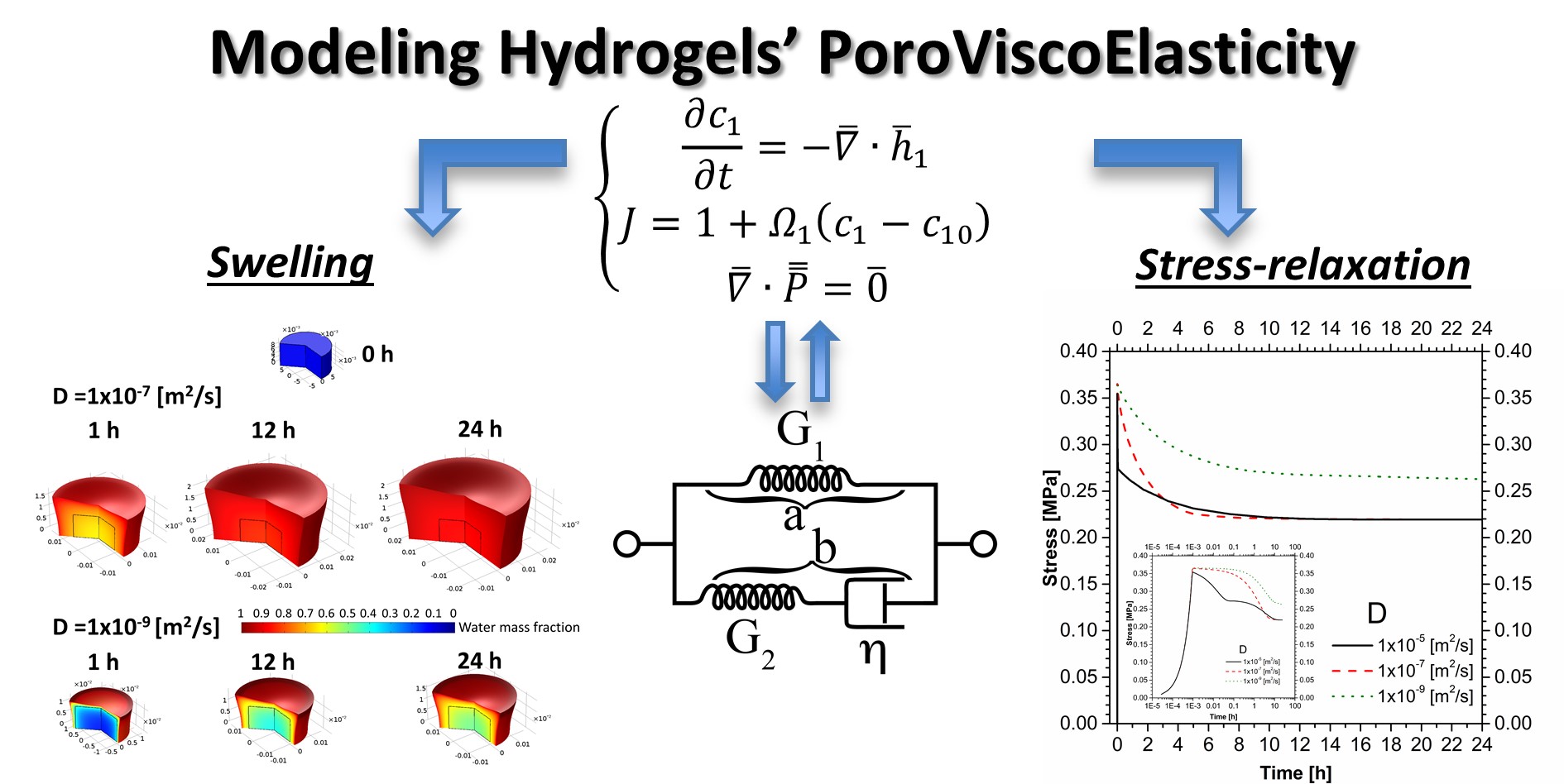In the following a 15 minutes video guide to show a very basic implementation in COMSOL Multiphysics of the poroviscoelastic model proposed in “Caccavo D. & Lamberti G. (2017). PoroViscoElastic model to describe hydrogels’ behavior. Materials Science and Engineering: C 76: 102-113, DOI: 10.1016/j.msec.2017.02.155 ”.
Aim of this guide is to provide an initial aid in the implementation of the model, therefore facilitating its use and spreading across the scientific community. We DO NOT provide specific aid for numerical issues and convergence problems.
The parameters, variables and equations files can be downloaded at the bottom of this page.
The file “Variables expressions using MATLAB” can be run in MATLAB to obtain the expressions of the variables used in the model development. It is not directly needed for the model implementation but it could be very useful when the constitutive equations have to be modified.


Hello,
Thanks for the sharing this. It is a fascinating work and give me a real inspiration. Could you please also provide the implementation in Comsol proposed in “Mechanics and transport phenomena in agarose-based hydrogels studied by compression-relaxation tests”? I am typically interested in the relaxation process of gels.
Sorry to bother you and thanks for your time.
Dear Dongjing He,
the implementation we provided can be also used to describe the stress-relaxation behavior of hydrogels. You just need to properly change the boundary conditions (i.e. see section “4.2 Unconfined stress-relaxation test” in “PoroViscoElastic model to describe hydrogels’ behavior” and Fig. 2 in “Mechanics and transport phenomena in agarose-based hydrogels studied by compression-relaxation tests”).
Best regards
Diego
Dear Dr. Caccavo,
Thank you for your explanation previously. I have another confusion about the model in this article. It is assumed that the polymer network is incompressible, and the change of volume is completely due to the volume of solvent. However, in the reference state, the spring 1 has volume change due to the solvent migration while the spring 2 has no volume change, and the det(F_visc) equals det(F_0). My question is: in the free-swelling case, will the spring 2 change its volume during the swelling process? Additionally, in the steady state, is it also true that the spring 2 still has no volume change?
Sorry to bother again and thank you for your help.
Sincerely,
Dongjing He
hi i’ve implemented the same model following your guide. However if i want to recreate it in £d i have to change something. Could you tell me how? In Caccavo’s article there is a 3d model
In “Caccavo D. & Lamberti G. (2017)” the model is 2D axisymmetric.
Dear Dott. Caccavo i’m working on a similar model, i have to create a model in 3d , as the one in your article. However i don’tknow how to change the functions for a 3d model, could you help me?
Dear mina, the model in “Caccavo D. & Lamberti G. (2017)” is 2D axisymmetric, not 3D, despite most of the equations are ready to be used for a 3D implementation.
Dear Dr. Caccavo,
I could not find the ” parameters, variables, and equations files” at the bottom of this page. I wanted to try to follow this video guide as a starting guide in understanding the swelling behavior of the gels. It would be great if you could point me in the right direction.
Thank you,
Prattay
Dear Dr. Caccavo,
Thanks for the video, would you please put the parameters, variables and equations files, I can not find them here
Bests
Fatemeh
Thank you for the effort put forth to share your model and its implementation. I am hoping to cite it on an upcoming paper using PEG hydrogels. I did have a question in regards to how the expressions are generated, in particular the dashpot equations. The size of that expression is eye popping and it appears to be generalized for 3d. I would like to do a more simplified version by hand so I can see whats is going on a bit more. Can you point me to a good reference for seeing what you are doing. I am having a tough time bridging the paper to the youtube video.
Thanks